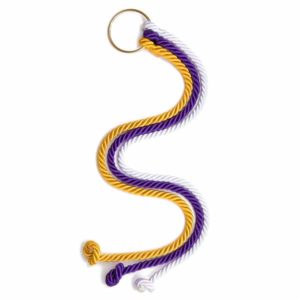Tangled Up in Love
Tying the Knot Wedding Ceremony
The ceremonial tradition of
Tying the Knot started as an intimate ritual, originating in the time of the Roman Empire. The tradition comprised on the bride wearing a girdle tied in knots. The groom would untie the knots before they consummated their marriage.
As time evolved, the custom transformed to the physically tying the couple's hands together during the wedding ceremony. Their hands would remain tied together until after the marriage was consummated.
Today, this tradition has become more symbolic representation of two people merging their lives together, and varies greatly among different cultural wedding ceremonies.
Tying the Fisherman's Knot:
One version of the Tying the Knot Ceremony performed in modern day wedding ceremonies consists of the partners working as a team to tie a fisherman's knot. This takes place during the wedding ceremony, performed in front of the couple's loved ones.
The significance of the fisherman's knot refers to the physical knot's strength and reliability. This symbolizes the strength of the bond shared between the couple. Rather than waning under pressure, it grows stronger.
What materials will I need to perform a Tying the Knot Ceremony?
- Two pieces of rope (for example, fishing rope, ribbons, pieces of twine, or colored cord)
- One strand represents you
- One strand represents your partner
2 PRO TIPS:
- Choose two different colored ropes to represent you as individuals coming together
- to avoid loosing the knot after the ceremony, assign a reliable member of the wedding part to be responsible for it's safe keeping until after the wedding.
READ MORE: Another Ceremonial Tradition with a TWIST!

Cord of Three Strands Ceremony




